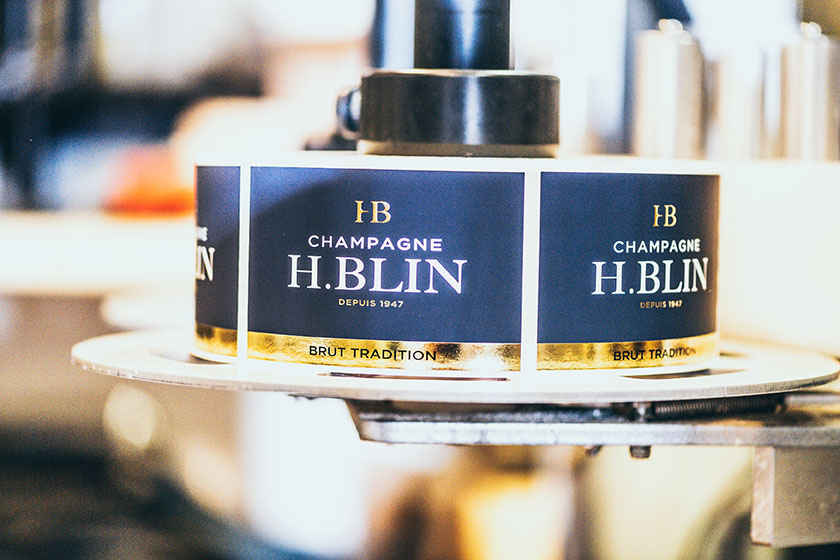
Elaboration
Located in Vincelles in the Marne Valley (25 minutes west of Epernay and Reims), Champagne H.BLIN is known for its cuvees with a strong identity crafted to express their unique character.
These champagnes are based around the historic local grape variety, Pinot Meunier.
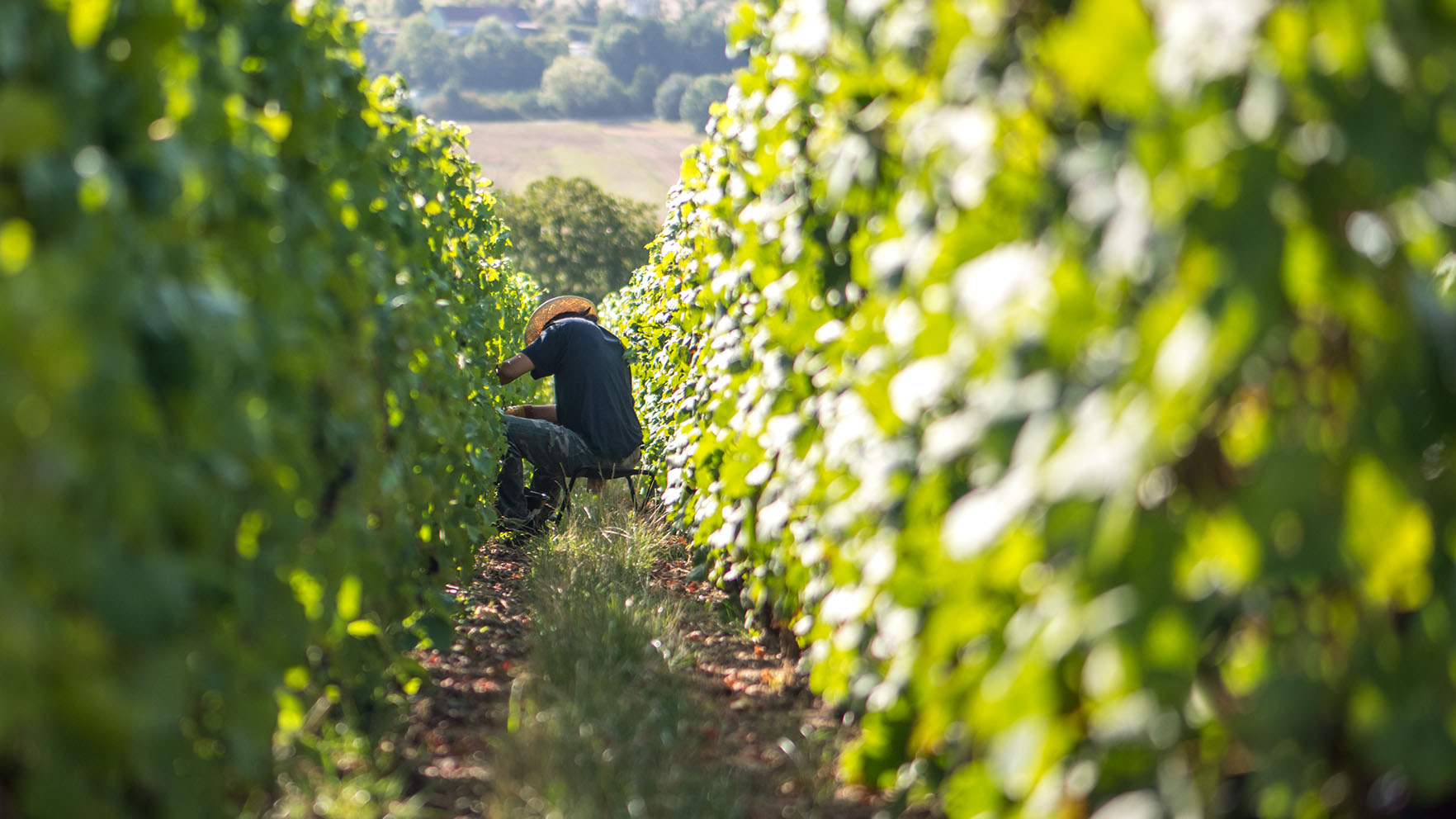
WORKING THE VINES
Vineyards grow to the rhythm of the seasons. By working every day and getting to grips with their vines, growers and vintners have built the quality and reputation of Champagne.
In Vincelles more than elsewhere, vintners are in constant physical contact with their vines – just like their fathers, grandfathers, and great-grandfathers before them.
HARVEST
This is the culmination of many months’ work, fears, and doubts. A time of both enjoyment and stress, the village takes on a unique atmosphere at harvest time.
It’s at this time that H.BLIN will gear up all five presses (three 8000kg, one 12,000kg and one 4,000kg press for organic and single-vineyard wines) and work around the clock to ensure our vintners harvest the grapes at their peak.
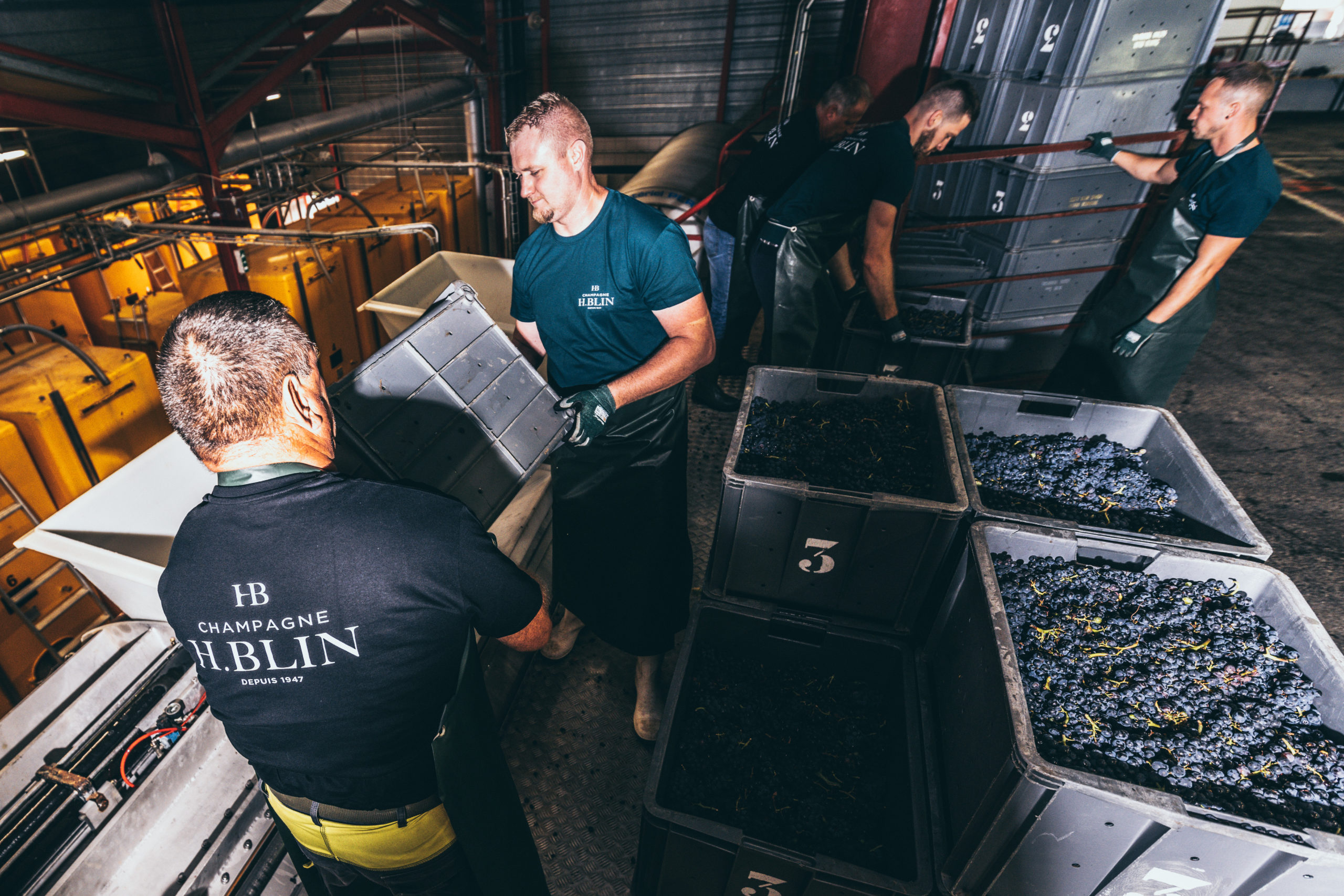
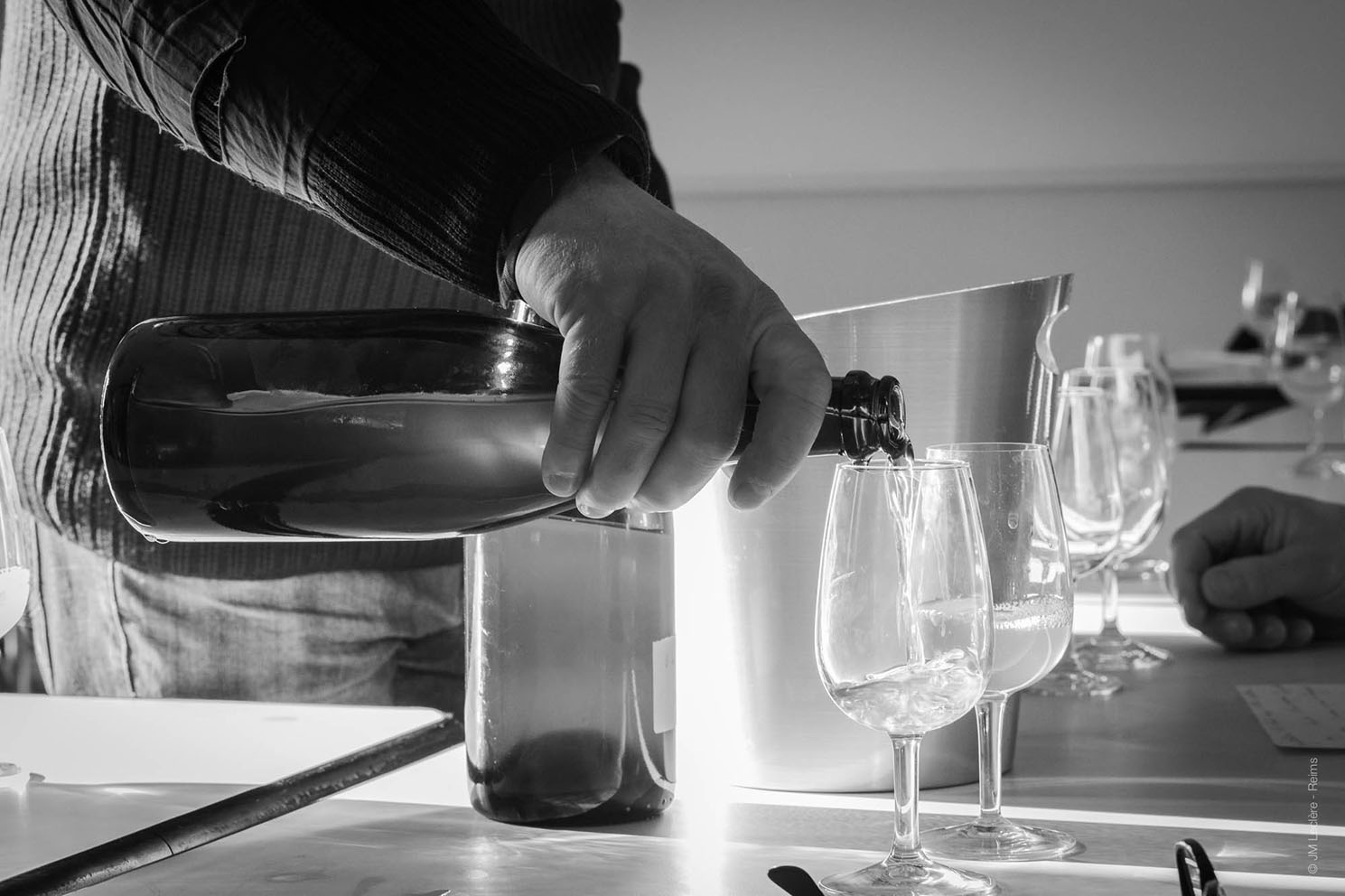
WINEMAKING AND BLANDING
After settling (the first step in the clarification process), the must (juice) is drawn off and sent to the vat room to be turned into wine. An initial fermentation will turn the must into wine. The second, malolactic fermentation (not compulsory) turns the malic acid in the wine into lactic acid, helping develop the wine’s aromas.
At Champagne H.BLIN, we will generally ferment a second time – except for certain champagnes, which benefit from a little more freshness and tension. Next comes “clarification”, producing a crystal-clear wine.
These are now ready for blending by Sébastien Barbier, the Cellarmaster and conductor of the orchestra that is Champagne H.BLIN’s unmistakeable style. Here, our reserve wines kept from previous years represent around 30% of the blend (depending on the wine).
TIRAGE
Near the beginning of the year (March and April for Champagne H.BLIN), the wines are taken from the vat and bottled. A “liqueur de tirage”, (mixture of sugar, yeast…) is added to ferment the wine a final time in the bottle, creating the gas that gives champagne its iconic bubbles.
AGEING ON THE LEES
In a dark, quiet cellar, the bottles sit and mature for several years (2 to 4 years on average at Champagne H.BLIN).
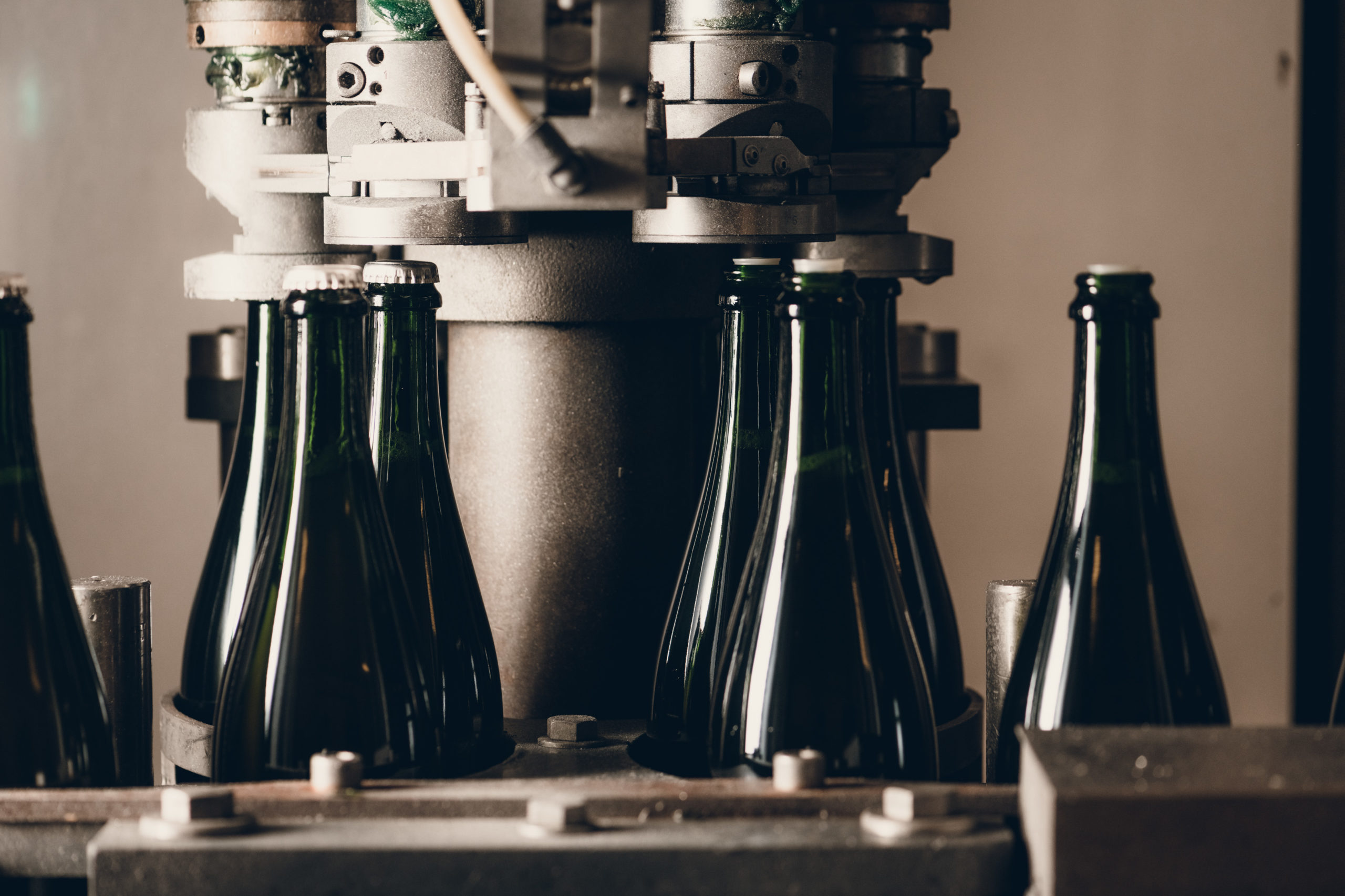
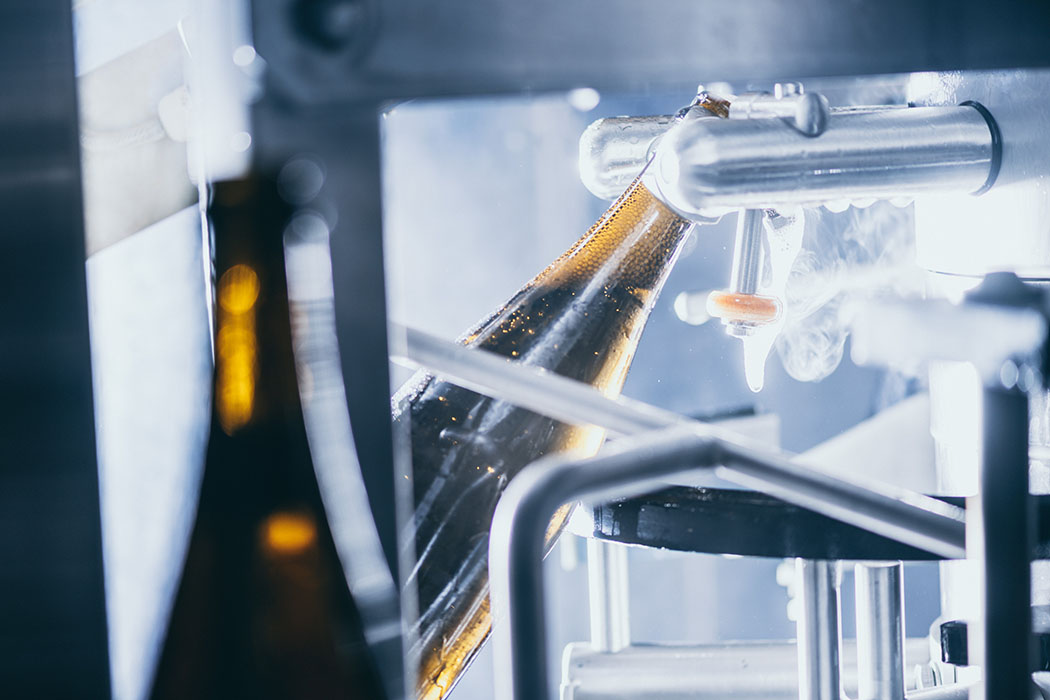
RIDDLING – DISGORGING – DOSAGE
Once properly matured, the wine must regain its former clarity and the sediment formed during the final fermentation must be extracted. To do this, each bottle is riddled to bring all of this sediment (yeast, etc.) down to the neck of the bottle, by the cap.
The neck is then plunged into a solution at around -27°, freezing the sediment mixture solid. When the bottle is opened, the internal pressure forces out this block while losing a minimum of wine and pressure. Lastly, the level is brought back up with a mixture of sugar and wine before a cork is inserted and secured onto the neck of the bottle.
The amount of sugar added will determine the type of wine that we want to produce (for example, Brut will contain between 6 and 12 grams of sugar per litre).
LABELLING – PACKING – SHIPPING
At Champagne H.BLIN, our wines are never shipped until the champagne has rested for at least three months (and six to eight for certain wines), allowing it to reach its full flavour and aroma potential.
Each bottle is labelled and packed by our teams, who strive to ensure the highest levels of quality. And we always keep a constant stock of bottles on site, allowing us to meet even the most urgent requests.
